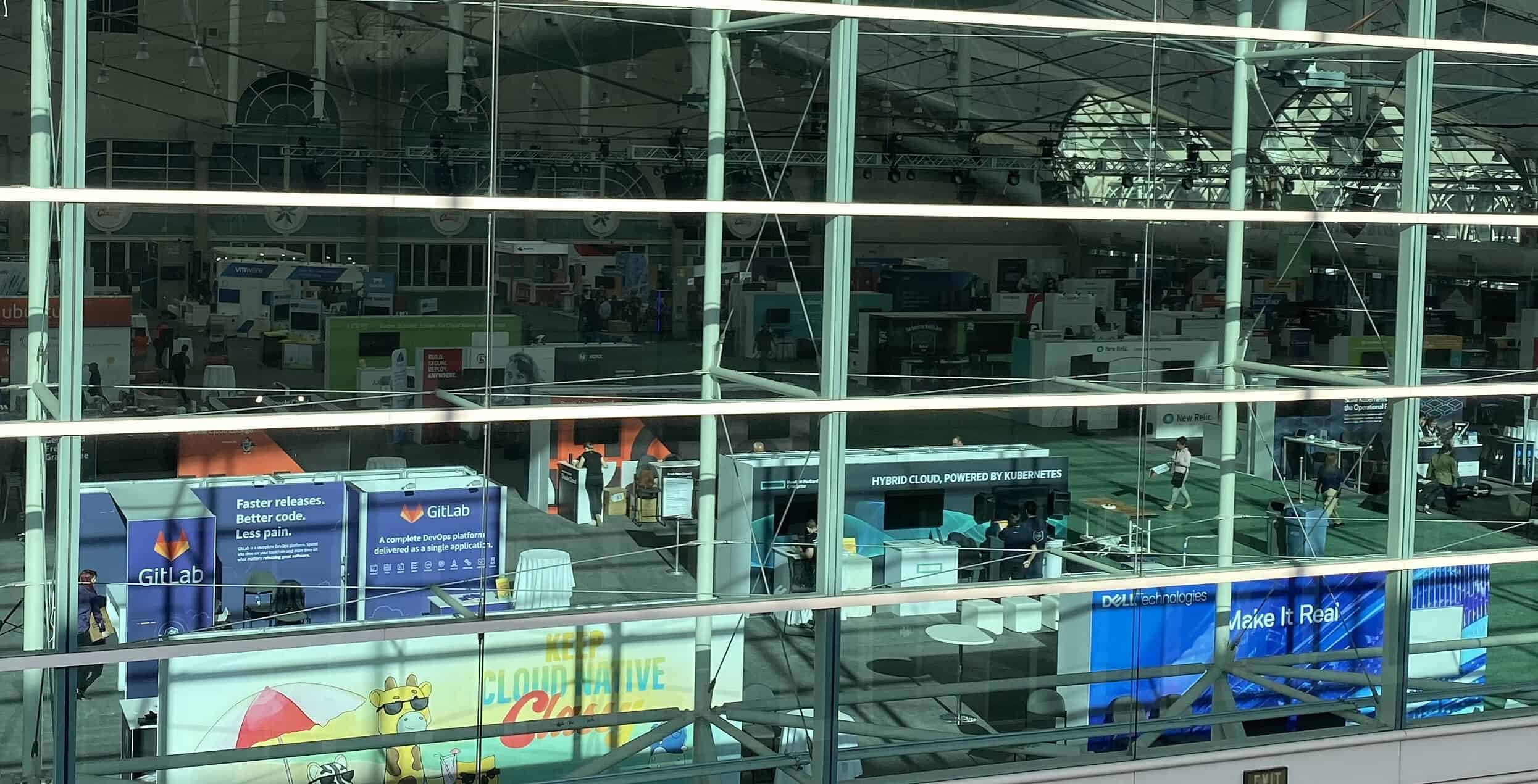Kubecon 2019: Kubernetes and Enterprise IT Collide
Enterprises are in the Stone Ages?
Originally posted as a newsletter edition. Subscribe now.
Kubecon had more than 200 sponsors. All were scanning badges for sales leads, giving away t-shirts, and had booth raffles. Walking the show floor, Kubecon felt like a traditional enterprise conference. However, if Kubecon 2019 San Diego was your first open source software (OSS) or Kubernetes conference, I’ll forgive you if you walked away thinking you live in the stone ages. I forgive you because I was tempted to feel the same. The keynotes had me feeling that the past 20-years of my IT career came to an abrupt end. There was the talk of canary distributions, SREs, Continuous Integration/Continuous Development (CI/CD), service mesh, autoscaling, and microservices as if they all are commonplace in everyone’s environment.
This conference was about the future. Let me give some anecdotal evidence. During the media/analyst session on Tuesday, the CNCF had a panel of four end users. The organizations included LinkedIn, the U.S. Air Force, and Fidelity. When asked what percentage of their environments were cloud-native, each panelist demurred. They may have talked about the number of clusters, hosts, or containers, but none of the leaders on the stage were willing to share cloud-native as a percentage of their environment.
The reality is the reality. Cloud-native, as defined by the CNCF, is only a fraction of the workloads running in the enterprise. Kubernetes was built to solve Google-sized problems. All this tells me that we are still in the phase of scaling the project for the enterprise.
My Key Kubecon Takeaways
You should know what problem Kubernetes solves. In a nutshell, if you need to run containers at scale and in production, you need Kubernetes. The bigger question is, do you need containers? Containers are a unique solution for a standard set of problems. If you want to build a CI/CD pipeline, containers are a nice clean way to move to a commonly supported set of technologies. The same is true for autoscaling and canary distributions. If these processes sound familiar, it’s because they aren’t new. These are the capabilities we’ve enjoyed since the widescale adoption of cloud services.
Watch my interview with Kubecon Co-Chair and VMware Sr. Staff Engineer Bryan Liles
Watch my interview with Kubernetes founder and VMware Principal Engineer Joe Beda
There are existing solutions for many of the process challenges Kubernetes natively fixes. Where Kubernetes shines is the ability to abstract the platform from the infrastructure provider. If you go as far as running your persistent data services in Kubernetes, you can easily lift and shift your applications to a different infrastructure or cloud provider. Today, customers lose the agility that mature public cloud services provide. The eco-system around Kubernetes looks to bring services such as serverless, CI/CD, and microservice architecture to the enterprise. All of these services exist in public cloud providers without the overhead of Kubernetes.
Think carefully about the problem you are solving before you undertake a Kubernetes journey. Do you disagree? Reply to this email and let me know your thoughts. (And make sure to share the email with peers so that they can sign up for the newsletter.)
HPE Container Platform
HPE announced its Container Platform to rival the full stack from Dell Technologies, including VMware. Dell is at an advantage by owning VMware and having the ability to create platforms such as PowerOne. Owning the whole stack means tight integration, even if the marketing message isn’t 100% ready. HPE is following a roadmap laid out by Netflix and commercialized by Docker, Red Hat, and Google.
Netflix’s cloud journey included containerizing monolithic applications by simply running an entire monolith in a container. Netflix standardized on Mesos and a custom container orchestrator. Docker, Red Hat, and Google all introduced Kubernetes frameworks for managing monoliths in containers. None of them, though, have really challenged VMware for dominance in managing traditional VM workloads.
HPE believes they have the right technology to match or exceed Dell + VMware via their MapR and Blue Data acquisitions, combined with their storage portfolio, to make a serious go at convincing customers to adopt a container-first strategy. Kubecon was the coming out party for the HPE Container Platform.
I’ll delve further into this when I have time to unload all of my thoughts from a busy few weeks.
Dell PowerOne, and a Missed Opportunity
Going to the other end of the spectrum, I also attended the Dell Technology Summit. The big announcement was Dell’s PowerOne platform.
It’s tempting to look at PowerOne as just another converged infrastructure (CI) offering. In reality, it’s Dell’s attempt to counter the need to go to a platform such as Kubernetes. Sure, you can run Kubernetes on a PowerOne CI; but the real value is in the automation of customer environments. That’s why Michael Dell talked about autonomous IT and the need to automate basic tasks such as storage provision and maintenance.
However, there’s also a cloud story Dell missed telling. When you couple VMware vSphere with Dell PowerOne, you get all the advancements that VMware has made with private and hybrid cloud. Think about the ability to use AWS RDS on PowerOne. That’s in addition to Project Pacific.
Dell missed a great opportunity to show how the company intends to bring automation to traditional workloads while still providing a platform.
Share This Story, Choose Your Platform!

IT infrastructure subject matter expert (Cloud, Virtualization, Network & Storage) praised for transforming IT operations in verticals that include Pharma, Software, Manufacturing, Government and Financial Services. I’ve lead projects that include consolidation of multiple data centers and combining disparate global IT operations. “Three letter” Federal agencies have called upon me to lead the modernization of critical IT communication platforms.




